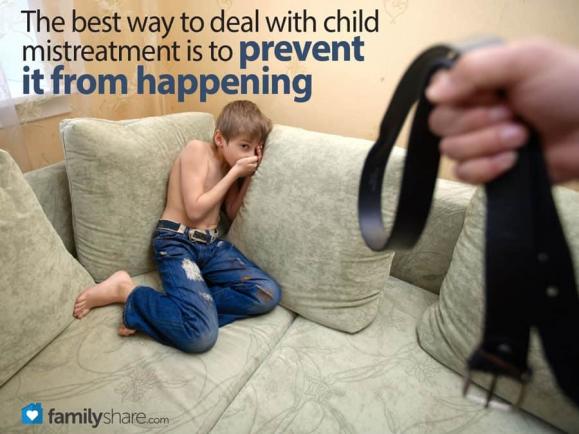
So much of the public dialogue concerning children is focused on their being bullied, harassed and mistreated outside of the home. However, focusing exclusively on these issues can cause us to overlook some big issues. Preventing child maltreatment is one such important issue, 80 percent of which according to the United States Department of Health and Human Services' Children's Bureau, takes place in the home.
The best way to deal with child mistreatment is to prevent it from happening. "Abuse has a tremendously negative impact on the family and our society,"� Hmurovich says.
Prevent Child Abuse America has calculated that the nation spends $80 billion per year in direct and indirect costs to remediate the effect of untreated maltreatment. On an individual basis, the estimated average lifetime cost per victim of nonfatal child maltreatment is $210,012 in 2010 dollars, including $32,648 in childhood health care costs; $10,530 in adult medical costs; $144,360 in productivity losses; $7,728 in child welfare costs; $6,747 in criminal justice costs; and $7,999 in special education costs. Additionally, the survivors of child maltreatment have an increased risk of poor health, criminal behavior and delinquency.
Below are tips designed to help families prevent and recognize abuse.
Methods of prevention
1. Get educated
-
Most abuse happens as a result of elevated stress and frustration.
-
Parent support groups can help provide families with the proper techniques to deal with stress and greatly reduce the risk of neglect and abuse in the home.
-
Hmurovich recommends "home visitation,"� a program that sends a volunteer to teach new parents how to give the best care possible to their newborn and reduce the risk of abuse in the home.
2. Be informed
-
Parents need to be informed of all types, causes and signs of abuse.
-
Be cautious of relying solely on "stranger danger."� Most abusers are someone who is trusted and close to the family.
-
Limit or eliminate situations where one adult (non-parent) and one child are alone.
-
It is an adult's responsibility to keep the child safe.
-
Building a trusting relationship with children can help a child avoid abusive relationships and situations.
HHS' Tips for Recognizing Abuse
-
Child may demonstrates a sudden change in behavior and school performance
-
Child has not been helped with a physical or medical ailment that the parent is aware of
-
Child has newly developed learning problems not resulting from physical or mental causes
-
Child seems to constantly watchful or ready for something bad to happen
Hmurovich advises anyone who recognizes that a child is in need of assistance to call the child protective service emergency hotline immediately. The important thing is to, "Tell someone you can trust and ask for help. Get the ball rolling somehow. You can put an end to the abuse and remain safe,"� Hmurovich says.
To contact the child abuse emergency hotline at any time call: 1-800-4-A-CHILD

